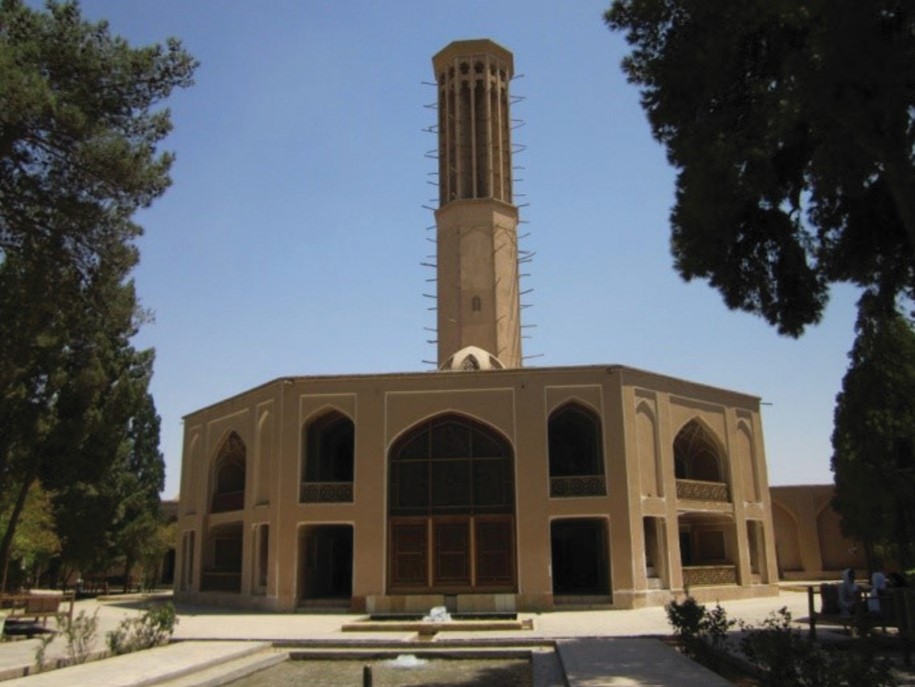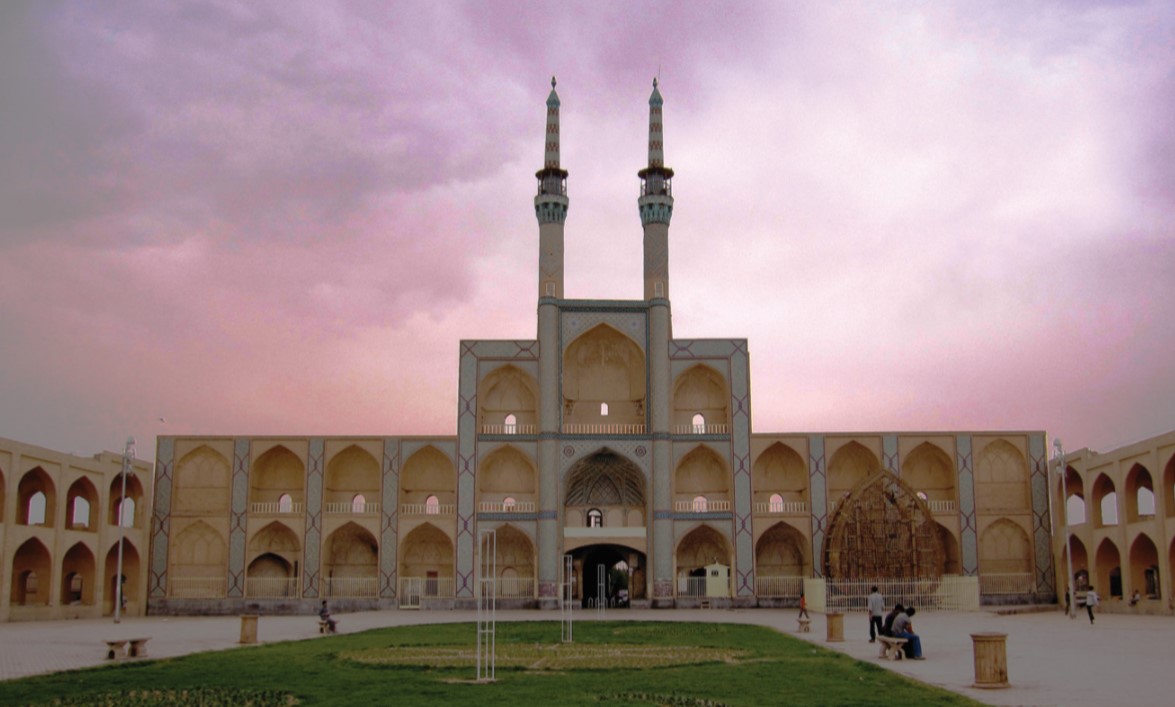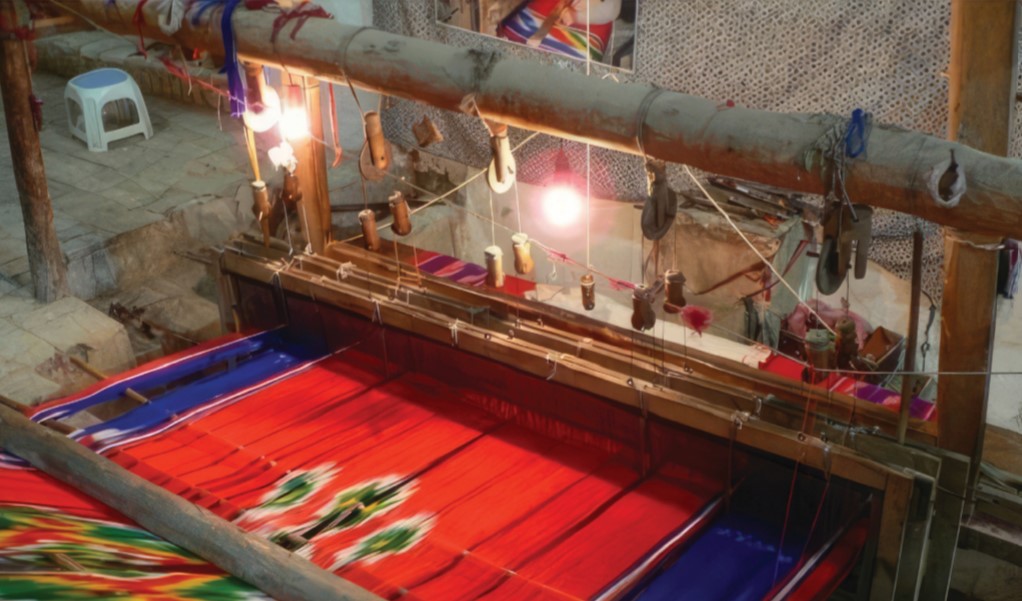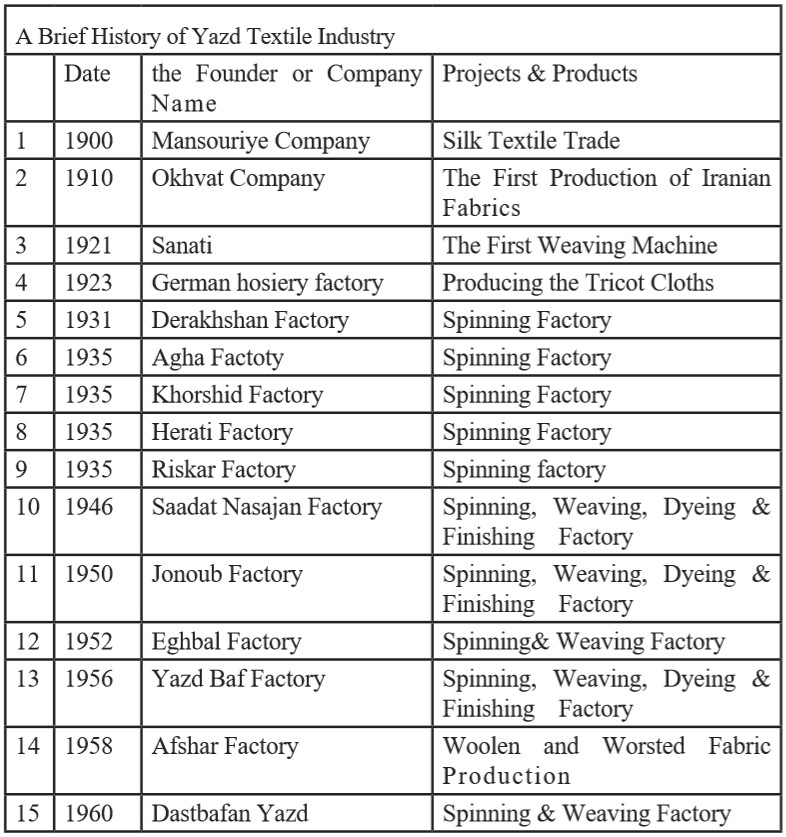History of Textile Industry of Yazd Province
Dr. Mohammad Mirjali, Managing Director of Yazd Textile Exhibition
Introduction
During the time one of the most impressive industries in human life has been the textile and related industries. Textile industry has changed the daily needs of humans by taking advantage of the latest scientific achievements and considering the peace and comfort of consumers.
The textile industry has also created an important trade. textile industry is perhaps one of the first industrial activities that primarily produced fabric in private at homes.
In Iran, the archeological evidence obtained from the excavations of Susa, shows the first signs of the existence of cloth in Iran from four thousand years BC. This long history in the textile industry and the its valuable artistic features is significant. Iran, along with the advanced and prominent countries in textile industry, has been able to have improvement and expansion in various branches by relying on technical skills. It is very important to introduce and inform about the modern and advanced products and achievements of the textile and clothing industries, which are the result of the efforts and scientific thought of the artisans, scholars and researchers of this country. This introduction can be done through mass media such as newspapers and websites and etc. The press that has many viewers and listeners in the world but none of them have been able to be as successful and effective as an exhibition that exposes these products to the public.
The 12th international exhibition of machinery and textile products, clothes and machine-made carpets in Yazd province with the experiences gained from the successful and glorious holding of the first exhibition of machinery manufacturers and manufacturers of textile raw materials in 2000.
Establishing the 1st to 11th international exhibition of machinery and textile products, leather, clothing and carpets from 2006 to 2022 in Yazd. This city is one of the poles of Iran’s textile industry with a long history in textile activities and the presence of more than 100 hundreds of textile, clothing and leather units from inside and outside of the country by Yazd International Textile & Garment Industry Exhibition. This event shows the greatness and capability of this industry by introducing valuable examples of the abilities, capabilities and capacities of textile and clothing producers from all countries. The exhibition is a way for powerful, flexible and cost-effective commercial, cultural and scientific interactions that mobilize large and diverse sources of wealth and can be one of the effective solutions in establishing and maintaining relationship with customers.
This exhibition tries to provide a suitable space to achieve the following goals:
– Acquainting the people of different countries with the latest achievements of the textile industry of Iran and the world
– Comparing the textile industry of our country with the latest achievements of the world’s textile industry
– Exchange of information to establish commercial relations and cooperation of domestic and foreign companies
– Identifying and introducing new products
– searching about customers, competitors and their new products
-Fundraising
– Identifying the new sales representatives
– More sales and increasing in market share
– communication between costumers and sellers
– Expanding business relationships with foreign participants
– Introducing the capabilities and technical advances of Iranian producers to foreign participants and visitors
– Informing about the latest production and service achievements of foreign countries
We would like to thank all the people who once again demonstrated the efforts of Iranian artisans, producers, artists, researchers and businessmen with their fruitful presence in this exhibition, and also to all the helpers who played a proud role in the establishment of this exhibition.
It is expected that the establishment of this exhibition in the Yazd industrial city, with the active presence of successful textile units and related industries, will facilitate the achievement of the goals. We hope that in the future, with your hard work in the field of industry and production, we will see the results of your efforts. This exhibition will be an opportunity for the experts of different fields to learn about the latest achievements of the country’s textile and clothing industries and to get to know the local, job-creating and currency-earning textile industry of Yazd beside helping us in solving our problems.
An Introduction to Yazd Province (A Short History)
According to some historians, the first foundation of Yazd belongs to the time of Zahhak. Also they believe that the constructions of two other historical cities of the province, Meybod and Abarkooh, go back to the time of Solomon and Abraham (pbuh). Yazd is an ancient word which comes from the root-word “Yast” or “Yazt”, meaning worship, praise, adoration, God, etc. One of the five chapters of Avesta (the Zoroastrian’s holy book) is also called “Yast”.
On the other hand, a collection of scattered ancient works in the province indicates the great cultural and historical background of this region, including the stony hand tools in the valleys of Mount Shirkooh, engravings of Mount Ernan’s slate and painted pieces in Narin Castle which belong to the Islamic period. In addition, a story tells that the four ancient points of Mehrizand Fahraj, Yazd, Rostaghand Meybod, and Ardakan had been the centers of civilization in the province. Researchers have also depicted its location on the ancient highways of Rey-Kerman and Pars-Khorasan, a part of the far land of Media.
But according to other documents, one can mention the important and especial role of Yazd in Achaemenid period. In fact at that time, big roads, tall houses, well-equipped post offices and Chapar Khanehs (Pony Expresses) had changed Yazd to a guard of important roads of Iran. In accordance with some old religious memorials, before New Zoroastrianism, other ancient religions had prevailed in this region. Amongst them Mithraism and worshipping Anahita can be mentioned.
Some other obvious sings of Yazd’s long history are the old 5000 years cypress of Abarkooh and the coins relating to the time of Purandokht, the Sassanide, which have been coined in Meybod.
Yazd in the Islamic Period
In ancient Iran, Yazd was situated in the margin of the main highway of eastwest. Thus, during the first Islamic periods, it was occupied by Muslims. A group of Bani of Tamim and BaniAmer tribes settled there and founded Kuy-e Arabha (The Lane of Arabs).
After the dominance of the Deylamian dynasty over the south and the west of Yazd, a group of Alavian (descendants of Imam Ali (pbuh)) migrated to this city and founded Kuy-e Husseinian (The Lane of Husseinian). The most famous Alavi migrant was named Imamzade Seyyed Ja’far (pbuh), whose mausoleum has been a shrine for a long time.
After Islam, the dynasties and rulers who have ruled Yazd include:
Al-e Kakuyeh: They constructed a lot of mosques, schools, Qanats (aqueducts) in villages and around the city of Yazd.
Atabakan, Mongols and Al-e Mozaffar:
During their 77 year period of reign, Yazd came to a climax in cultural, social and economical development.
Timuridsand Safavid: At this period, extravagant religious fanaticism and unreasonable massacres caused great spiritual damage in Iran, especially in Yazd.
 Dolat Abad garden, one of the desert gardens which has been internationally registered
Dolat Abad garden, one of the desert gardens which has been internationally registered
Afsharian and Qajar: A lot of artifacts and works are remained from this period. Dolat Abad garden, one of the desert gardens which has been internationally registered.
History of Textile Industry of Yazd Province
The more than two thousand years of history of Yazd city can be considered a treasure of artists whose faith and unceasing efforts are the biggest factor of their living in the desert land. The people who, in the field of their hard life, weren’t scared of the vastness of the desert and dug the soil of this land to reach the water.
 Amir Chakhmaq Square, Yazd, Iran
Amir Chakhmaq Square, Yazd, Iran
Amir Chakhmaq Square, Yazd, Iran This country is the story of men and women who opened their small workshop every day at sunrise for many years and by interweaving yarn and weaving and producing textiles, they were able to be a symbol of faith and hard work in their simple lives. The peoples amazing arts adorn the museums of the world and get everyone attraction.
For many years, architects of Iran tried to make Yazd, the heritage of the ancients, to be noticed by the world and Finally Yazd gets a place in the UNESCO world heritage list. In comparison the cities like Isfahan, with their history and monuments, could not reach to the standards of the UNESCO organization and be in the UNESCO list due to the constructions and changes that were made in this city.
Yazd is one of the ancient regions of the vast country of Iran and this city is located on the way of the Silk Road, which has been in the field of this art and craft for a long time, and the history of weaving in this region for several thousand years has caused that people who live there have this characteristic and taste. During the Sassanid era, silkworm cultivation, production of silk fabrics and cotton cultivation flourished in this region, and from the Patriarch period until the end of the 14th century, exquisite silk fabrics and various handwoven fabrics were produced in Yazd.
Herodotus and Marco Polo are among those who mentioned Yazd and its beautiful and exquisite fabrics in their writings. Among the artists who weaved exquisite fabric in Yazd, Ghiyathuddin Naqshband was a designer, weaver and poet of the Safavid era and was able to introduce the people capabilities of Yazd in this field to the world. He was one of the famous designers, weavers and artists. He was also the inventor of technical methods of fabric weaving like “Velvet”. There are some beautiful and exquisite fabric samples from the 11th century AH, which belong to Yazd textile workshops in terms of weaving techniques.
The main and central part of Yazd has passed about 2400 years but the construction and settlement of Yazd began 18 centuries ago, so that now Yazd province has an area about 72156 square kilometers, which is approximately 4.37% of the total area of Iran. At the beginning, fabric weaving was people art in Yazd, so that during the Sasanian period, silkworm breeding, silk fabric weaving industry and cotton cultivation, flourished significantly.

Sha’r weaving device, one of the traditional arts in Yazd
Sha’r weaving device, one of the traditional arts in Yazd
Silk weaving has had a special place in Yazd since the beginning, especially from the Patriarch period until recently, exquisite silk fabrics were woven in Yazd, and for this reason, weavers of Yazd became famous in the world.
Yazd textile industry was not the same in all periods, the Safavid period can be considered as the golden age in the Iranian textile industry. Yazd is one of the main centers of silk weaving in this period. Marcopolo’s travelogue states: “Yazd is a big city that is considered an important point in terms of trade and communication, and a type of silk and gold fabric is woven there, which is known as and is exported to all over the world.”
Weavers in Yazd were not only skilled in the weaving of exquisite and artistic textiles, but also specialist in design and construction of textile production devices and tools. the residents of other Iranian cities got benefit from the above services for many years. This shows that Yazd has a cultural and historical background with the textile industry. Once upon a time, you could hear the sound of weaving machines coming from houses and weaving workshops when you passed through the narrow streets in Yazd. The naming of tools and parts of weaving machines based on the people dialect is a sign that this art is deeply rooted in the culture, history, and existence of these people.
The lifespan of the machine textile industry is insignificant compared to traditional textiles and weaving, and this period strongly affected the handlooms and the destruction of workshops and handicrafts in its textile field, but in these industries, Yazd is also one of the main poles of the country. Yazd is leading in terms of investment, production and employment in proportion to the population.
Here we are going to tell a brief history of the textile industry that has prospered the city of Yazd and also the country since ancient times.

Currently, the textile and clothing industry of the country with more than 8000 industrial units represents about 10% of the total industrial units and the value of its production reaches about 20 billion dollars per year. In addition, the clothing industry has stock about 40% of the total.
Unfortunately, the export of this industry has not been good and reaches less than one billion dollars annually. The textile and clothing industry has a 20% stock in the country’s industrial employment, employing about one million people. The existence of huge resources of oil and gas as a part of the raw materials needed by the textile industry. Agricultural land is also needed by this industry for cotton production as a complementary part of the raw material. These two items finally cause good future for textile industry.
If little attention is paid to this industry as well as the development of trade relations with other countries, the textile and clothing industry can make a significant contribution to trade between countries.
In addition, the textile industry has created 4% value added of the industrial sector in Iran. The presence of prestigious university centers in the country for training engineers and graduates in the field of textiles, as well as the presence of more than 15,000 textile workers with bachelor’s and higher education, has made this industry unnecessary in terms of specialists.
Out of all the active units in the field of textile industry in Iran, Yazd has been introduced as the hub of the country’s textile industry, having 2000 textile units with direct and indirect employment with more than 20 thousand people, which includes 27% of employment. The global export of textile and clothing products is growing, and in 2017, clothing had the largest share in global trade. Clothing with a 57% share, and fabric had 19% share in that trade. The Yazd textile industry is still one of the leading industries in the country, where 80% of domestically produced furniture fabric and 90% of the country’s carpet production are only part of Yazd achievements.
Currently, Yazd is known as one of the Iran’s textile industries by using modern production tools. There are knitting production units in this city, which revives the traditional weaving of Yazd. One of the effective ways to recognize and introduce Yazd textile art is to expand communication with specialists and managers in this field. The best ways to establish this interaction is to hold specialized, national and international exhibitions that introduce and show the Yazd textiles. One of the most important factors in the growth and expansion of the textile industry in Yazd is to develop the textile products market. Market development requires serious and basic planning, such as the creation of real and legal sales brands and companies, experiencing the business boards, activating the exporting teams, and holding domestic and international exhibitions.

